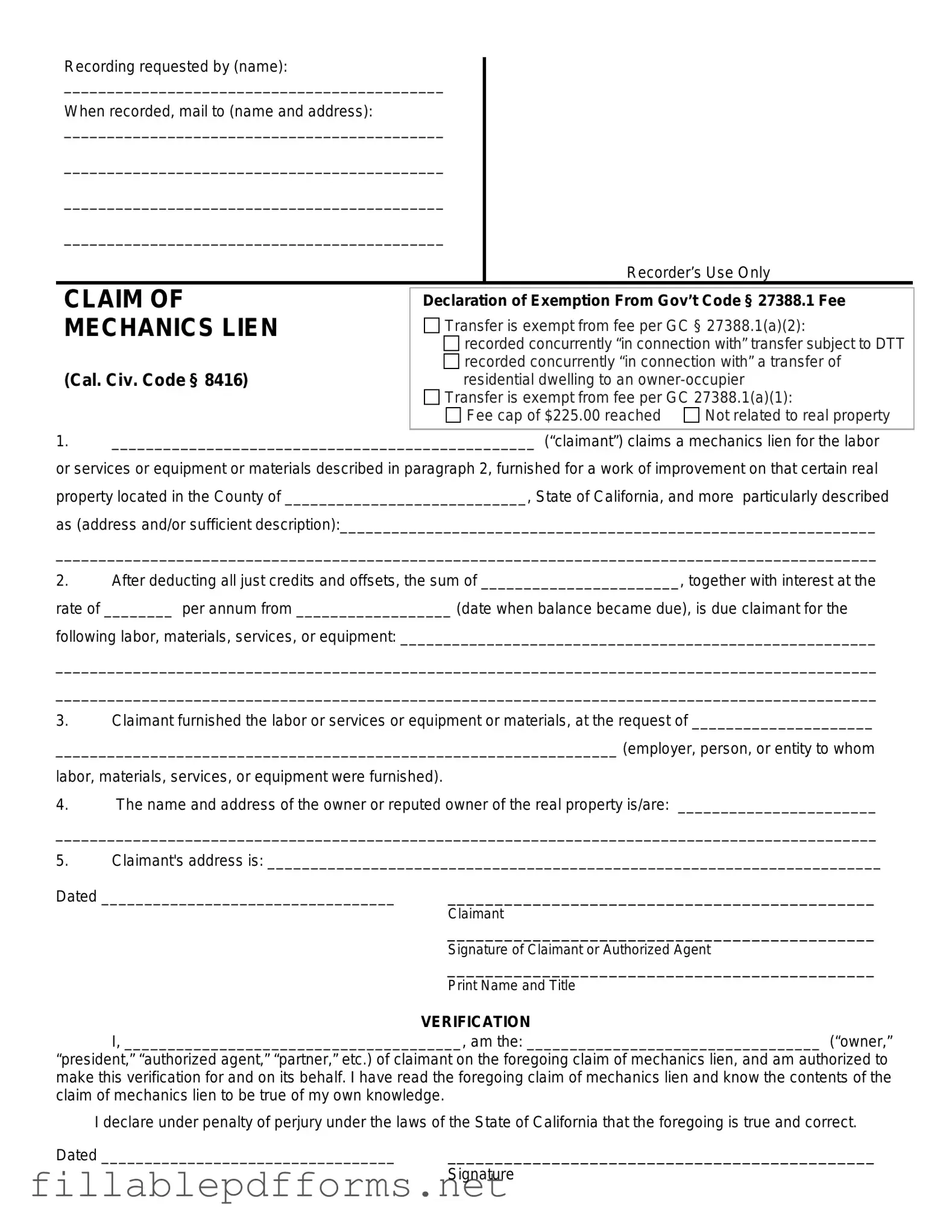In the bustling world of construction and real estate, ensuring that all parties are compensated fairly is crucial. One essential tool for contractors, subcontractors, and suppliers in California is the Mechanics Lien form. This legal document serves as a powerful safeguard, allowing those who have provided labor or materials for a project to claim a right to payment. When properly filed, it creates a lien against the property, which can be a strong incentive for property owners to settle outstanding debts. The form requires specific information, such as the property owner's name, a description of the work performed, and the amount owed. Additionally, timely filing is critical; missing deadlines can jeopardize a claimant's ability to enforce their rights. Understanding the nuances of this form is vital for anyone involved in the construction industry in California, as it not only protects their financial interests but also helps maintain the integrity of the entire project. With the right knowledge and careful attention to detail, utilizing the Mechanics Lien form can be a straightforward process that ultimately leads to successful outcomes for all parties involved.
